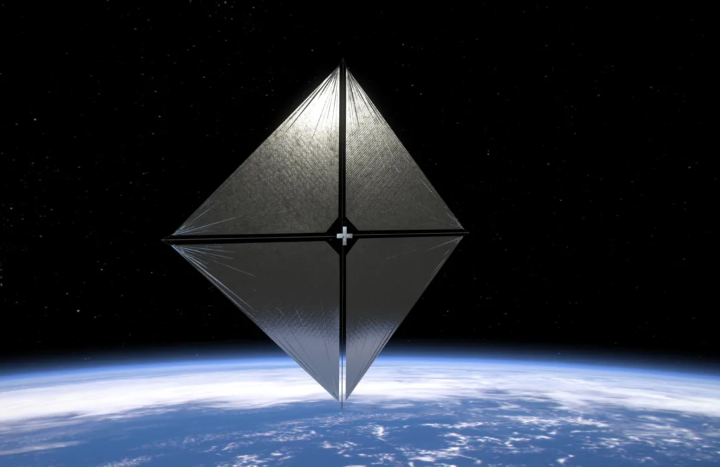One of the Milky Way’s craziest stars has underwent an increase in wackiness.
PSR J0952-0607 is the most massive neutron star ever identified, with a mass that is staggeringly 2.35 times that of the Sun, according to measurements made by scientists.
If accurate, this would be very close to the theoretical upper mass limit of neutron stars, which is thought to be around 2.3 solar masses. This would make them an ideal laboratory for studying these incredibly dense stars, which are believed to be on the verge of collapsing, in an effort to better understand the peculiar quantum state of the matter from which they are made.
In the nucleus of a uranium atom, for example, “we know roughly how matter behaves,” said astrophysicist Alex Filippenko of the University of California, Berkeley.
“A neutron star is like one huge nucleus, but it’s not at all apparent how they would behave when you have one and a half solar masses of this stuff, which is around 500,000 Earth masses of nuclei all clinging together.”
The collapsed cores of huge stars, which were between 8 and 30 times the mass of the Sun before going supernova and ejecting the majority of their material into space, are known as neutron stars.
These cores are among the densest things in the universe, with a mass that hovers about 1.5 times that of the Sun; the only object denser is a black hole.
They contain all of their mass in a sphere just 20 km (12 miles) across; at that density, protons and electrons can interact to form neutrons. The sole factor preventing this neutron ball from disintegrating into a black hole is the pressure required for them to share the same quantum state, known as degeneracy pressure.
This implies that neutron stars act somewhat similarly to large atomic nuclei. It is difficult to predict what occurs when neutrons reach this tipping point, where they may either blur into a soup of smaller particles or create bizarre formations.
One of the most fascinating neutron stars in the Milky Way is PSR J0952-0607. It is a type of neutron star known as a pulsar, which spins rapidly and emits radiation jets from its poles. These poles sweep past the spectator (us) like a cosmic lighthouse as the star spins, giving the star the appearance of pulsing.
These stars have rotation rates that can reach millisecond scales, which is just amazing. The second-fastest pulsar in the Milky Way, PSR J0952-0607, rotates at an astounding 707 times per second. (The fastest rotates 716 times per second, which is only somewhat quicker.)
Additionally, it is a “black widow” pulsar. The star and its binary partner are in such a close orbit that the companion star’s material is being drawn into the star by the star’s powerful gravitational field. Similar to water spinning around a drain, this material creates an accretion disk that spins around and feeds into the neutron star. The star receives angular momentum from the accretion disk, increasing its spin rate.
Astrophysicist Roger Romani of Stanford University headed a group that was interested in learning more about how PSR J0952-0607 fit into the process’ timetable. Less than 10% of the Sun’s mass makes up the binary companion star. The research team carefully examined the system and its orbit, using that knowledge to get a brand-new, accurate measurement for the pulsar.
The conclusion of their computations was 2.35 solar masses, plus or minus 0.17 solar masses. PSR J0952-0607 has sucked up to an entire Sun’s worth of matter from its binary companion, assuming a normal neutron star beginning mass of about 1.4 times the mass of the Sun. According to the team, having this knowledge about neutron stars is really essential.
“This offers some of the most powerful limitations on the characteristics of matter at densities several times those of atomic nuclei. In fact, this discovery excludes a number of dense-matter physics models that were previously widely used “Romani elucidated.
“A neutron star’s high maximum mass implies that its interior is made up of a mixture of nuclei and their dissolved up and down quarks. This rules out a lot of theoretically possible forms of matter, especially those with unusual internal compositions.”
The binary also demonstrates a way through which single pulsars with no binary neighbors can have rotation rates of milliseconds. The partner of J0952-0607 is almost completely consumed; assuming it isn’t tipped over the upper mass limit and further collapses into a black hole, the pulsar will continue to rotate at its incredibly high rate for a considerable period of time after that.
It will also be by itself, just like all the other lone millisecond pulsars.
“Material leaks over to the neutron star as it develops and begins to turn into a red giant, spinning it up in the process. A jet of particles begins to emanate from the neutron star as it starts to spin up and become extremely energetic. The donor star is subsequently struck by that wind, which begins removing material. Over time, the donor star’s mass shrinks to that of a planet, and if additional time passes, it completely vanishes “explained Filippenko.
“That explains how single millisecond pulsars could develop. They had to be in a binary pair to begin with, so they weren’t wholly by themselves, but over time, their friends slowly vanished, leaving them alone.”
The Astrophysical Journal Letters is where the study was published.





